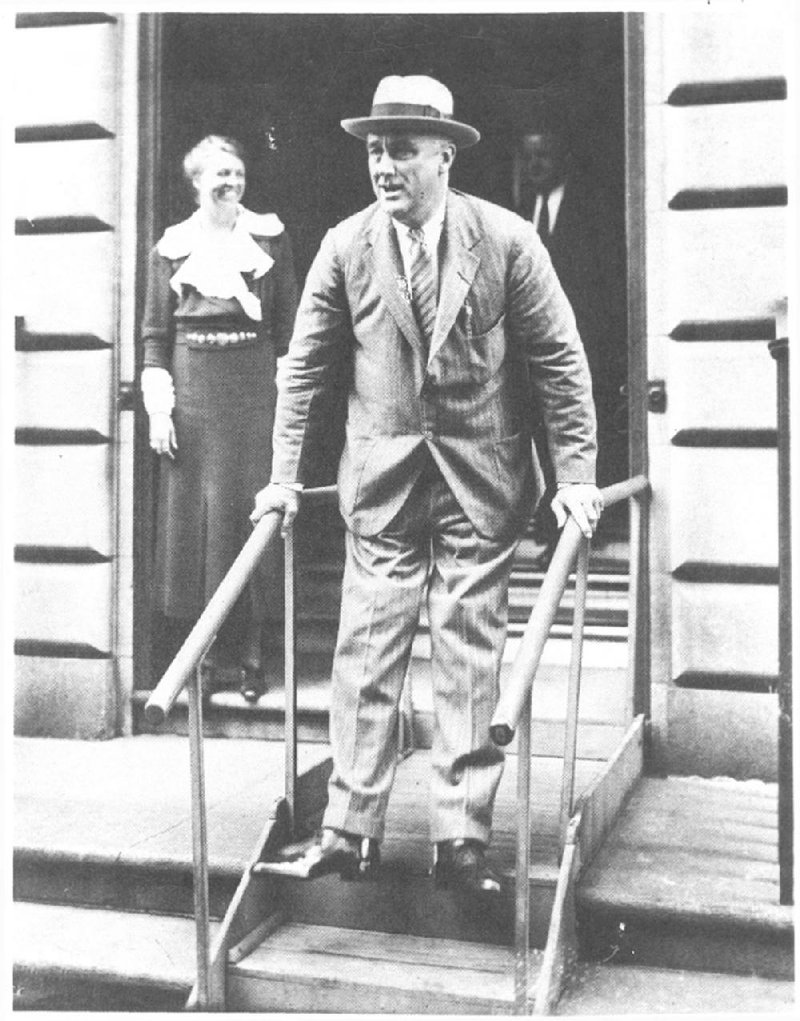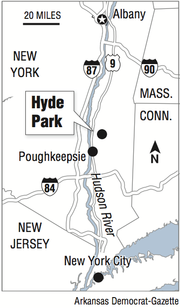HYDE PARK, New York — Franklin Delano Roosevelt and Eleanor Roosevelt are still a big part of the scene at Hyde Park, N.Y.
FDR was born Jan. 30, 1882, at Springwood, the family estate, and grew up there. Although he had residences on Campobello Island, New Brunswick; in Manhattan; in Warm Springs, Ga.; and lest we forget, during three-plus terms in the White House, he considered Springwood his home. It is where he is buried, alongside Eleanor and his beloved Scottish terrier, Fala.
Today, you can follow in FDR’s footsteps — through the home he grew up in and through his career in politics — by heading back down to U.S. 9 from Eleanor’s place and then turning east toward the Hudson River.
There you’ll find Springwood, Home of Franklin D. Roosevelt National Historic Site and the Franklin D. Roosevelt Presidential Library and Museum.
Roosevelt left instructions for the creation of the museum in his will. It was the first presidential library.
I remember when I saw it 20 years ago, how surprisingly down-to-earth, intimate and homespun it was. Not only had I gotten to see Roosevelt’s White House desk and his wheelchair, but the christening outfit the future president wore plus totally undistinguished grade-school report cards (they were distinguished in the end, though, weren’t they?).
Now there are 13 presidential libraries spread across the country. And standards and technology for keeping our commanders in chief’s stuff safe have been upgraded.
In 2010, the National Archives and Records Administration, which runs these sites, undertook the first renovation of Roosevelt’s library since the building opened in 1941. The infrastructure and exhibitions received major overhauls, and the library reopened last year.
The change has been pretty vast, but the effect remains as I remembered: down-to-earth, honest. Today there are even a couple of places in the building set up to resemble the actual places in Hyde Park where FDR broadcast his fireside chats.
But there are also $6 million worth of new exhibitions and display areas, and everything has been rearranged. Along with enhanced preservation, the goal has been to help preserve FDR’s contributions to history and politics. Or, as the curators put it, presenting a “New Deal to a new generation.”
The new exhibitions tell the story of the Roosevelt presidency, beginning in the depths of the Great Depression and continuing through the New Deal and World War II with an emphasis on Franklin and Eleanor Roosevelt’s relationship with the American people.
They include a lot more technology. You can “flip” through e-scrapbooks themed around Eleanor, the family and politics. Not only can you see the desk at which FDR sat, signed and sometime swore, but you can touch items on his old-fashioned desktop (remember, once they were actually made of wood) via a big touch screen, to learn more about each.
Right past the entrance, you will begin — as FDR did when he took office — in the throes of the Depression, as you face a grainy old picture of hapless men, with “Unemployed” in 3-foot-high neon letters across it.
At the museum entrance, you’ll find a smorgasbord of letters — to FDR, Eleanor and Fala. Some to all three.
“I can refrain no longer from expressing my thorough disgust at the frequent airings of the details of ‘Fala’s’ love-life in the newspapers and on the radio,” wrote Mrs. Marjory C. Todd of New York, “with genuine indigestion.”
Fala still has his own exhibition within the museum. Actually, it has been expanded; you’ll find some of his toys, a bowl and collar. Like a letter addressed to “Albert Einstein, USA,” all Fala needed on his collar was “The White House.”
FDR PRESIDENTIAL LIBRARY AND MUSEUM
The address is 4079 Albany Post Road (U.S. 9) in Hyde Park, N.Y.
Park at the Henry A. Wallace Visitor and Education Center, a big, new building with the New Deal Store, a cafeteria (with a convenient patio) and the information and ticket desk.
Tickets for the Presidential Library and Museum are $9; senior citizens (62 and over) $6; 15 and under free.
You can only visit Springwood, the home of FDR, by taking the one-hour tour. A combination ticket for the FDR Presidential Library and Museum and the Home of Franklin D. Roosevelt is $18. Your Springwood tour ticket is for a specific time, as the tours are guided and groups must be fairly small. You’re on your own in the library, so you can get your timed ticket and then plan your time around it. The combination tickets are valid for two days — in case you’re really inspired. You can make reservations in advance by calling (877) 444-6777 or going to recreation.gov.
The grounds and the Rose Garden, where Franklin and Eleanor Roosevelt and Fala are buried, are free and open from sunrise to sunset.
The home and museum are open 9 a.m. to 6 p.m. April through October; until 5 p.m. November through March. They are closed Thanksgiving, Christmas and New Year’s Day.
For more information, visit fdrlibrary.marist.edu or call (800) 337-8474.


